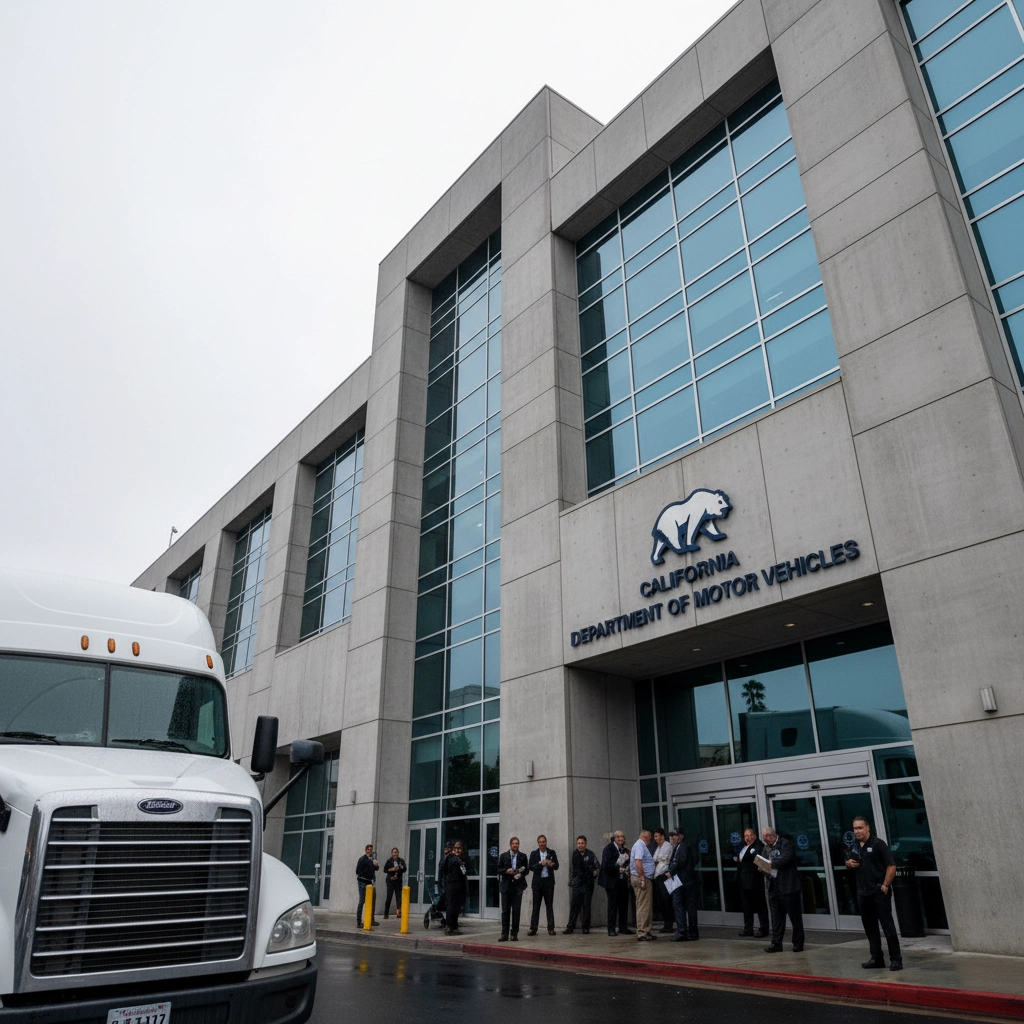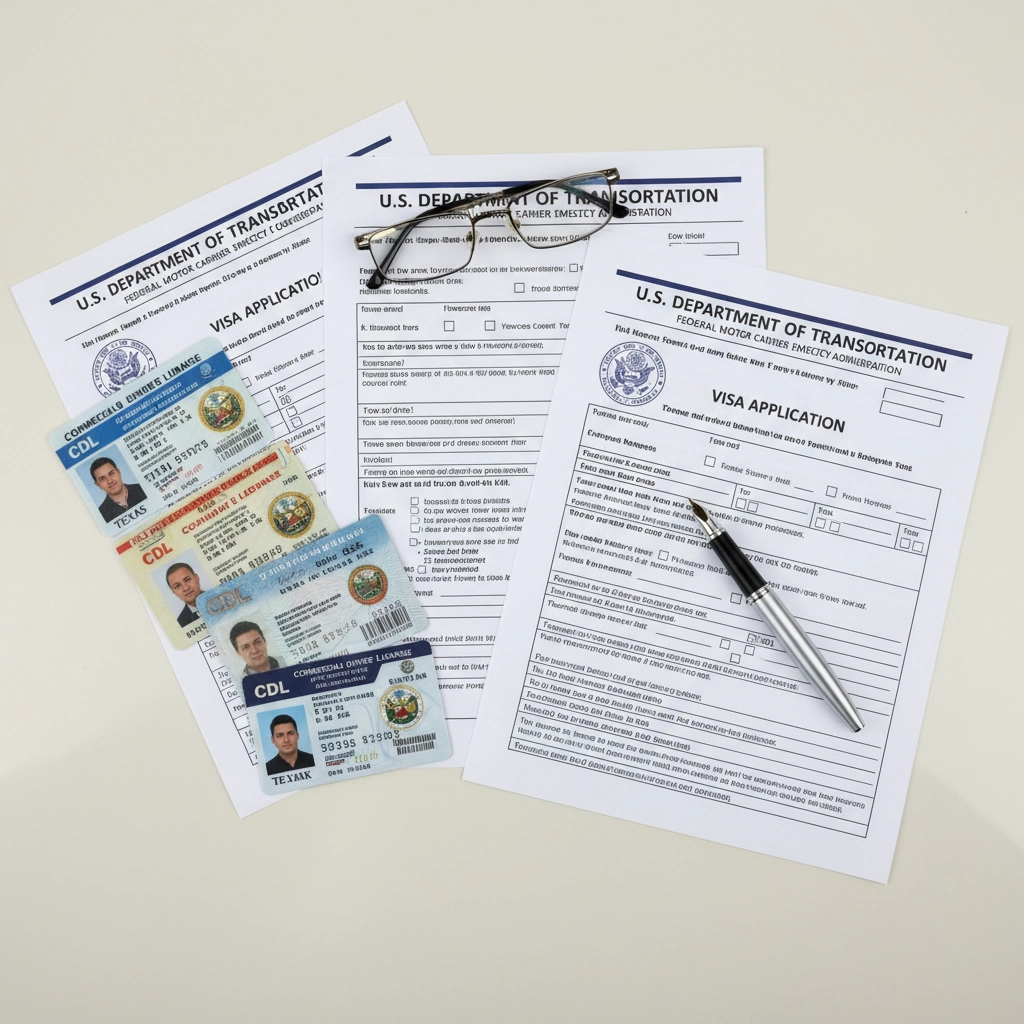Breaking News: The U.S. Department of Transportation just dropped a bombshell that's sending shockwaves through the trucking industry. California must revoke 17,000 non-domiciled commercial driver's licenses within the next 60 days, and this federal crackdown is about to reshape how fleets operate nationwide.
If you're running trucks in California lanes or employing drivers with non-domiciled CDLs, this affects you directly. Here's everything you need to know in under three minutes: because your fleet's future depends on understanding this mess right now.
The California CDL Crisis: What Just Happened
California's Department of Motor Vehicles just admitted to one of the biggest CDL compliance failures in recent history. They illegally issued over 17,000 non-domiciled CDLs to foreign drivers, with many licenses having expiration dates that exceeded the drivers' legal authorization to remain in the United States.
Think about that number: 17,000 drivers. That's not a small accounting error: that's a systemic breakdown that lasted for years.
An FMCSA audit revealed that more than 25% of California's reviewed non-domiciled CDLs were improperly issued, making the Golden State "systemically noncompliant for years." The federal government isn't messing around this time. California has exactly 60 days to clean up this disaster, or they face losing $160 million in federal highway funding in the first year alone: a penalty that could double in year two.

The New Federal Rules That Change Everything
The Federal Motor Carrier Safety Administration didn't just identify the problem: they completely rewrote the playbook. An emergency rule took effect immediately, and the changes are massive:
Visa Restrictions: As of September 29, 2025, states can only issue non-domiciled CDLs to drivers holding H-2A, H-2B, or E-2 visas. If your drivers don't have these specific visa categories, they're out of luck.
Expiration Date Alignment: Non-domiciled CDL expiration dates must now align with the driver's I-94 arrival/departure record or expire within one year: whichever comes first. No more extended licenses that outlast legal status.
Mandatory In-Person Renewals: Every non-domiciled CDL holder must now renew in person. No exceptions, no mail-in renewals, no online processing.
Enhanced Documentation Requirements: States must verify legal status documentation at every renewal, creating additional administrative burdens and longer processing times.
The Immediate Fleet Impact: Capacity Crisis Incoming
Here's where this gets real for your bottom line. Drivers who were legally operating yesterday might not be able to work today while California reviews every single non-domiciled CDL. When those reviews conclude, expect significant downgrades and invalidations.
Capacity Loss: California processes thousands of loads daily. Removing 17,000 potentially affected drivers from the equation creates an immediate capacity shortage. Freight rates in California lanes are already showing upward pressure, and this is just the beginning.
Operational Disruptions: Fleet managers are scrambling to conduct roster audits, re-verify driver documentation, and plan for renewal procedures under stricter requirements. The administrative burden alone is crushing smaller operators.
Competitive Disadvantage: Fleets heavily reliant on non-domiciled CDL holders face an immediate competitive disadvantage against operators with primarily domestic drivers or those holding the specific visa categories still permitted.

What This Means for Different Fleet Types
Regional California Carriers: If you're running dedicated California routes, this hits you hardest. Your driver pool just got significantly smaller, and replacement drivers are becoming more expensive by the day.
Cross-Country Operations: Long-haul fleets with California delivery points need contingency plans. Driver shortages in California could create bottlenecks that ripple across your entire network.
Agricultural Transportation: H-2A visa holders remain eligible, giving agricultural transport some breathing room. However, seasonal fluctuations could still create capacity challenges during peak periods.
Port Operations: Container drayage operations at California ports face particular challenges, as many drayage drivers held non-domiciled CDLs. Port congestion could worsen if driver shortages persist.
The Domino Effect: Other States Under Federal Scrutiny
California isn't alone. Federal auditors are reviewing CDL issuance practices nationwide, and several states have already received compliance notices. Industry sources suggest Texas, Florida, and New York could face similar crackdowns if their non-domiciled CDL practices don't meet federal standards.
This isn't just a California problem: it's the beginning of a nationwide recalibration of CDL issuance standards.
Immediate Action Items for Fleet Managers
Driver Roster Audit: Review every driver in your fleet immediately. Identify all non-domiciled CDL holders and verify their visa status against the new requirements.
Documentation Verification: Re-verify driver documentation against federal eligibility requirements. Don't assume previous verifications remain valid under the new rules.
Legal Consultation: Consult with transportation attorneys regarding driver status and potential liability issues. The legal landscape just shifted dramatically.
Contingency Planning: Develop immediate contingency plans for potential driver losses. Can you shift routes? Adjust delivery schedules? Partner with other carriers?
Recruiting Strategy Adjustment: Pivot recruiting efforts toward drivers with eligible visa categories or domestic CDL holders. The talent pool just got much smaller and more competitive.

The Financial Reality: Costs Are Coming
Compliance Costs: Expect increased administrative expenses for documentation verification, legal consultations, and enhanced renewal processes.
Driver Wage Inflation: Reduced driver supply means increased wage pressure. Budget for higher driver compensation to remain competitive.
Operational Inefficiencies: Driver shortages create operational inefficiencies that directly impact your cost per mile.
Insurance Implications: Some insurance carriers may adjust policies or rates based on driver eligibility changes and compliance status.
Looking Ahead: What to Expect in 2026
Continued Federal Scrutiny: Expect ongoing federal oversight of state CDL issuance practices. Compliance will become a permanent operational consideration.
Technology Solutions: Look for technology platforms that help automate driver eligibility verification and compliance tracking.
Industry Consolidation: Smaller fleets unable to adapt to the new compliance requirements may face consolidation pressure.
Rate Adjustments: Freight rates will likely adjust to reflect reduced capacity and increased compliance costs.
The Bottom Line for Your Fleet
This California CDL crisis represents more than a regulatory hiccup: it's a fundamental shift in how the industry operates. Fleets that adapt quickly to the new reality will maintain competitive advantages, while those that don't could face serious operational challenges.
The 60-day clock is ticking for California, but smart fleet managers aren't waiting. They're auditing drivers, verifying documentation, and preparing for a dramatically different operating environment.
Your next 60 days could determine whether your fleet thrives or struggles in this new regulatory landscape. The choice is yours, but the clock is already running.
Stay ahead of industry changes that impact your bottom line. Visit GoTrucking.News for breaking transportation news, regulatory updates, and fleet management insights delivered daily.
Contact GoTrucking.News:
- Email: info@GoTrucking.News
- Phone: +1 970-671-7787
Follow us for instant updates:
#CDLRevocations #TruckingIndustry #FleetManagement #CaliforniaLaws #DOT #FMCSA #TruckingNews #TransportationCompliance #CommercialDrivers #TruckingRegulations #FleetOperations #TruckingCrisis


